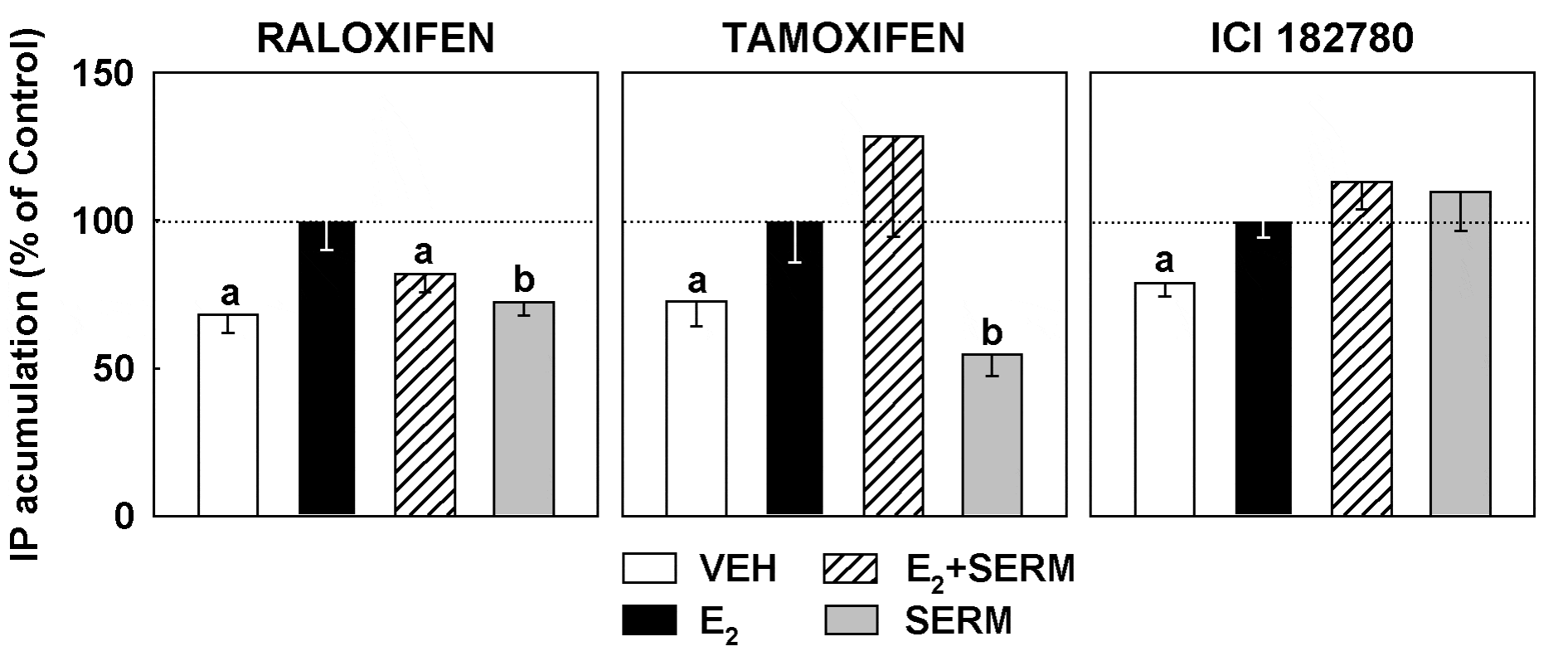In females, oestradiol (E2) sensitizes pituitary gonadotrophs and potentiates luteinizing hormone releasing hormone (LHRH) self-priming, which is partially dependent on phospholipase C (PLC) activation. We found previously that, in cyclic female rats, LY117018 (LY), raloxifene (RA), tamoxifene (TX), and ICI 182,780 (ICI) impaired LHRH-induced luteinizing hormone (LH) secretion. However, TX also displayed oestrogen agonist activity on LHRH self priming (Sánchez-Criado et al. 2002). The aim of the present study was to compare the effect of different selective oestrogen receptor modulators (SERMs) on LHRH induced-LH secretion and pituitary inositol phosphate (IP) accumulation, as an indicator of PLC activity.
Two hundred and fifty adult female Sprague-Dawley rats were housed under a 14 h:10 h light-dark cycle. Animals were ovariectomized under I.P. ketamine/xylacine (100 mg/10 mg per kg body wt) anaesthesia and, after 2 weeks of recovery, they were S.C. injected with vehicle (VEH), E2 (40 µg), and/or LY, RA, TX (3 mg of each per rat per day), and ICI (0.25 mg per rat per day). Animals were killed 2 days later (1600 h), and hemipituitaries cultured overnight in DMEM containing E2 (10 nM) and/or LY, RA, TX (100 nM), ICI (10 nM), plus 5 µCi of 2-H3–myo-inositol. Glands were then incubated with LiCl (10 nM) and exposed to LHRH (10 nM) or VEH for 40 min. Media and pituitaries were assayed for LH and IP accumulation, respectively. Experimental procedures were according to the EU guidelines for care and use of laboratory animals.
E2 enhanced LHRH-induced LH secretion and pituitary IP accumulation. Both effects were inhibited by the four SERMs. However, TX and ICI were unable to block the effect of E2 on LHRH-induced accumulation of IP. Furthermore, ICI alone potentiated pituitary accumulation of IP in response to LHRH, thus micmicking the effect of E2.
These results indicate that structurally different SERM molecules may exert selective agonist/antagonist activity on gonadotrophs. Intriguingly, ICI, a ‘pure’ antiestrogen, behaved as an oestrogen agonist on LHRH-induced PLC activation. Since this compound completely abolishes oestrogen receptor (ER) immunostaining in rat gonadotrophs (Sánchez-Criado et al. 2002), the above observations may be suggestive of an alternative pathway of oestrogen action in the rat gonadotroph that is independent of classical ER activation.
This work was supported by SAF2001-3614-C03-01, BFI2002-00485, Lilly, and Astra-Zeneca).

